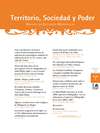Resumen
Resumen: El presente trabajo se enfrenta al poblamiento medieval o altomedieval de varias comarcas del río Trubia, afluente del Nalón. Partimos de un documento largo, datado el año 863, que solo se conserva en una copia tardía (siglo XII-XIII) del Archivo Capitular de Oviedo. El primer capítulo del mismo consiste en un análisis diplomáticohistórico de dicho texto, en el que se llega a dos conclusiones básicas: se trata de una copia falsa, elaborada tardíamente a base de copiar partes de documentos que el escribano tenía delante a la hora de confeccionarla. Se parece a un verdadero puzle diplomático; con todo, al comprobar que no se creó en su totalidad, sino a la vista de otras piezas diplomáticas antiguas, nos ha parecido que tiene mucho interés, a la hora de investigar sobre los territorios del centro de Asturias: Trubia, Banduxu y Proaza. En la segunda parte, partiendo de esa realidad de diplomas preexistentes, perdidos en la actualidad, después de un minucioso trabajo de campo en las tres zonas para comprender el paisaje con la ayuda de la toponimia y la cultura material, llegamos a la conclusión de que muchos de los topónimos están estrechamente relacionados con los límites primitivos de tres parroquias de Oviedo (Trubia) y Proaza (Banduxu y Traspena). En el apartado final elaboramos una aproximación a la organización territorial y socioeconómica de la zona, destacando la existencia de poderosos jefes locales; uno de ellos, el más influyente, el presbítero Gladila, fundador de un cenobio y obispo de Lugo-Braga a mediados del siglo IX. También pretendimos aproximarnos a las estructuras sociales de tipo campesino que existían en aquellos territorios y a sus formas de economía básica: preferentemente la ganadería, sin excluir la agricultura.
Palabras clave: Trubia, Poaza, Gladila, documentación falsa, jefes locales, territorios altomedievales, monacato.
Abstract: The present work refers to the Medieval or High Medieval settlement of several regions around the river Trubia, a tributary of the Nalón. We start from a long document dated from 863, which is only preserved in a late copy (XII-XIII) from the cathedral archive of Oviedo. The first chapter consists of a diplomatic-historical analysis of it, which allows us to reach two basic conclusions: the first is that it is a false copy, produced belatedly by copying parts of the documents the scribe had in front of him when he was preparing this copy. It resembles a real diplomatic puzzle; even so, despite the fact that it was not created completely, but from other ancient diplomatic pieces, we have thought it is worth considering to investigate the mentioned regions in the centre of Asturias: Trubia, Banduxu and Proaza. In the second part, starting from the existence of some pre-existing diplomas lost at present, after thorough field studies in the three regions to understand the landscape with the help of toponymy and the material culture, we have reached the second conclusion that many of the existing toponyms are closely related to the primitive boundaries of these parishes of Oviedo (Trubia) and Proaza (Banduxu and Traspena). In the final section we have prepared an approximation to the territorial and socioeconomic organization of the area, underlining the existence of two powerful local chiefs, one of them, the most powerful, was the presbyter Gladila, founder of a monastery and bishop of Lugo-Braga halfway through ix century. We have also wanted to approach the social structure of the peasants that there were in those regions and the types of basic economy: preferably cattle rising, but not excluding agriculture.
Key words: Trubia, Proaza, Gladila, false documents, local chiefs, high medieval regions, monasticism.

